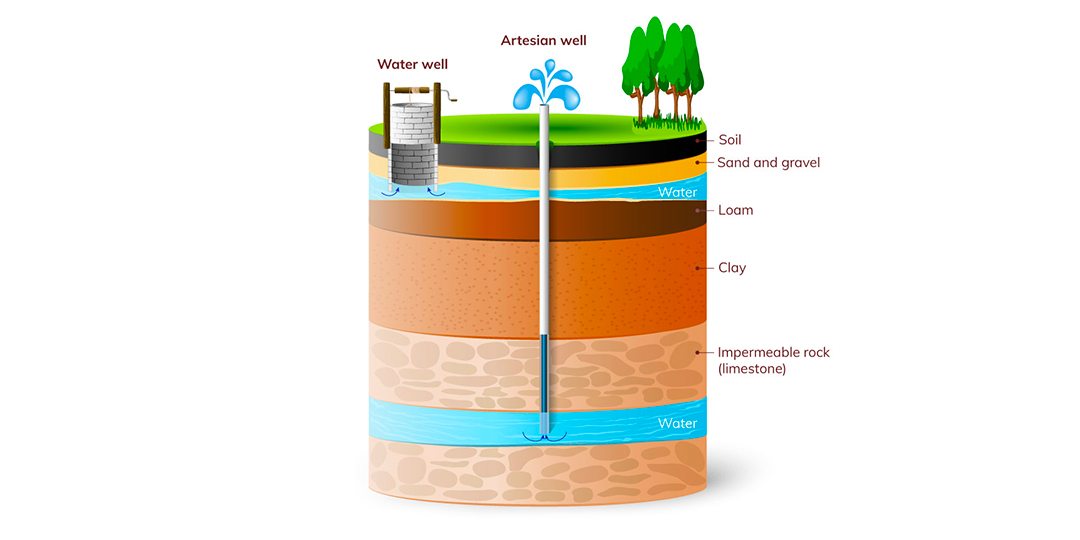What are the different types of wells?

Surface well
The surface well is supplied by water from the rain, snowmelt, a lake or a mountain. The water flowing from these places will saturate the water table where the surface well is located, and this is how the water table will feed the well from the bottom. Visually, a surface well has a circumference of about 30 inches in diameter and has a concrete cover.
Being exposed to the open air, as well as to water flowing through the first layer of the earth, these wells are more likely to contain water that will change with the seasons and major weather events. The water will be more directly affected by bacteria, iron, manganese, organic iron, tannins, turbidity and acid rain since it will not have had much time in the ground to neutralize.
In short, a surface well will provide you with a quality of water that is often unstable and changing with the seasons. Melting snow in the spring and falling leaves in the fall can produce water that can be unsafe to use.
Space must be allocated inside the house, most often in the basement, to install the surface well pump. A 1/2 HP pump is the required minimum, but we recommend installing a 3/4 HP pump for all homes. A more powerful pump provides better flow, water pressure and strength for cleaning all types of water treatment systems.
Pumps installed inside the home are unfortunately noisy. Luckily, it is possible to install a submersible pump in a surface well (1/2 HP is normally sufficient). In addition to not making noise, this alternative will provide you with a better flow rate, higher pressure and a better cleaning force. If the water needs to be treated, the options are more plentiful and often much less expensive if your well is equipped with a submersible pump.
Rule of thumb : it’s best to avoid surface wells!
Artesian well or deep well
Visually, a deep well is simply an 8″ diameter hole that goes down 100 feet or more into the ground. The artesian well goes beyond the water table of the surface well, through the impermeable rock layer, and reaches the deep water veins.
Water from a deep well is as likely as a surface well to require a water treatment system, but is more likely to be of stable quality throughout the seasons. This translates into a less expensive water treatment system, as there are fewer problems and less extreme variations due to the depth of the well.
In some cases where the water quality from a deep well is very problematic, it could be improved by having the well professionally sealed. Sometimes a deep well can receive water from the surface water table due to cracks. By lowering and sealing a smaller diameter pipe lower than the cracks, this will prevent surface water from entering and will correct and/or greatly reduce the need for a water treatment system.
Normally, if a deep well is producing problematic water quality (yellowish colour and residue), a simple test can tell you if it is worthwhile to have your well sealed. Run the water for a long time and note if it visually improves. If it does, sealing may be beneficial. Also, if the well is continually affected by sand or clay visible through sandy deposits in your water, sealing will be your only recourse.
Use a 1/2 HP submersible pump for depths up to 150 feet, and a 3/4 HP pump beyond 150 feet. If possible, installing a 3/4 HP submersible pump is always preferable to obtain more pressure for the entire house and better performance for cleaning the water treatment system.
